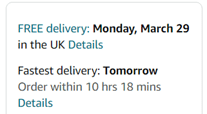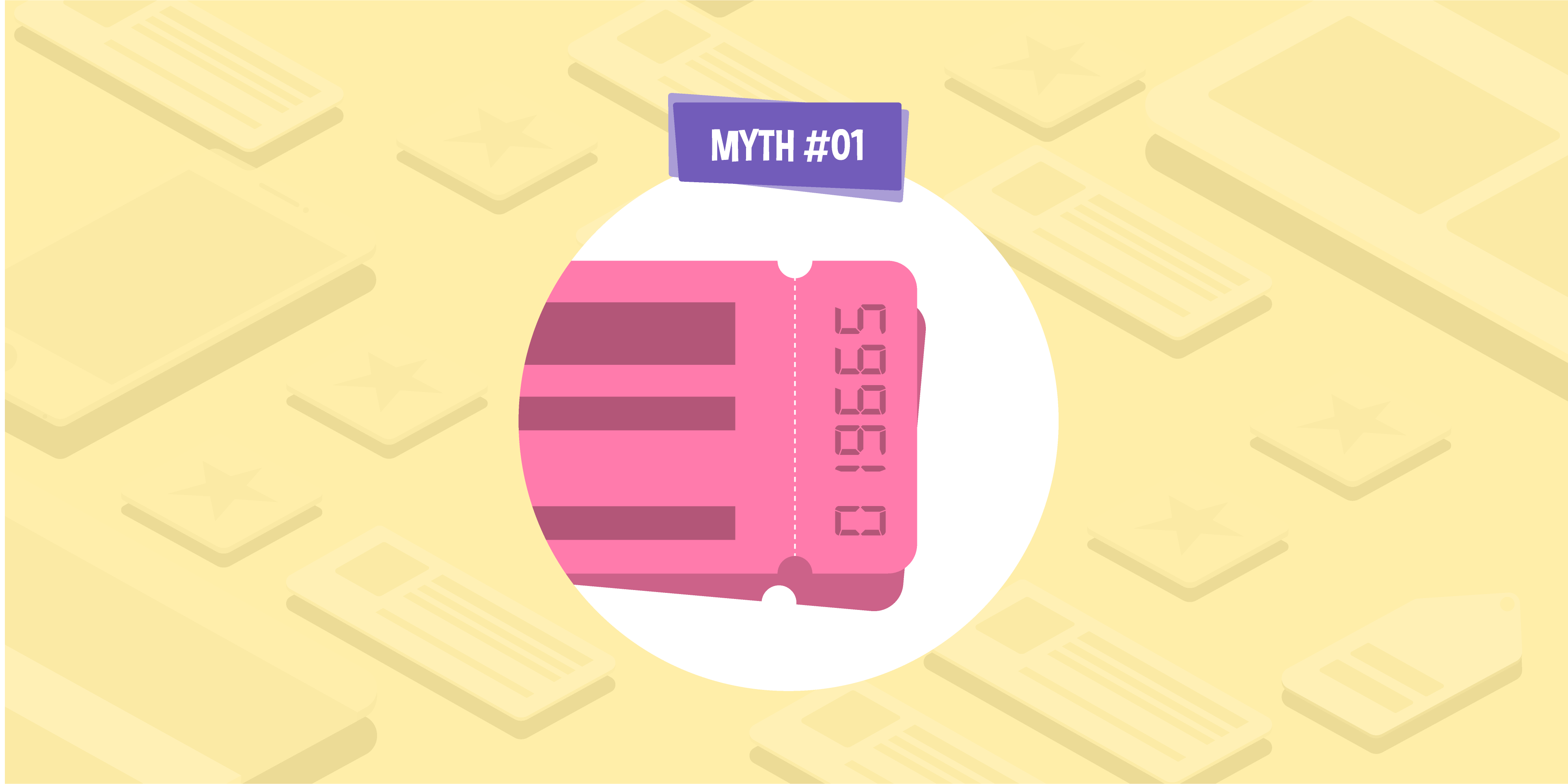
- 13 Apr 2021
- 6 Min read
5 tips for communicating your delivery information to boost ecommerce sales
- by Lina Arshad
Are your analytics showing a high bounce-back rate when customers get to your checkout page? You’re not alone. In March last year, over 88% of all ecommerce carts were abandoned globally, meaning many online retailers missed out on those all-important conversions.
While this might have been driven to some extent by the uncertainty of the pandemic and finances being affected around the world, one of the most common reasons for cart abandonment is that delivery costs weren’t shown beforehand and, once presented at checkout, are deemed unsuitable for the customer’s budget.
Your delivery pricing and policy is totally up to you, but you can achieve better SERP click-through and attain more onsite conversions by presenting it in a way that’s clear, upfront, and honest.
In this blog post, I’ll be sharing five tips for presenting your ecommerce delivery information that can win you some extra sales.
1. Update your onsite SEO elements to target delivery keywords
If you’re offering desirable services like click and collect, free delivery, or next-day delivery, you’ll want to show these off.
Taking advantage of these appealing options is a sure way to help you to secure some more sales, but by making your delivery policies clear and incorporating them into your optimised elements, you can also increase your website’s visibility in search engines. That’s because lots of shoppers actively search for these services. In turn, this can lead to more click-through and potential sales.
40,500 people a month search for ‘next day delivery flowers’ on Google UK (SEMrush)
In order to do this, you’ll need to make sure you have your delivery offers included in your optimised SEO elements. This includes using keyword research tools to discover which terms related to your delivery options have good search demand, and naturally incorporating these into your title tags, H1s, meta descriptions and body content. In doing this, you’ll be signalling to Google what you are offering and increasing your chances of ranking for these sorts of keywords. Plus, it’ll show customers from the first instance what you offer over other competitors in the SERP.
For example, in the below example for a SERP listing of flower brand Serenata Flowers, they have made sure their free UK delivery option is mentioned in the title tag and meta description so that customers know they won’t be greeted with any hidden charges at the checkout.

2. Mention delivery information on product pages and banners
When your customers are busy browsing your product selections, it’s likely they might forget about the delivery options you’re offering. So, it’s worth adding these to static elements such as headline banners that carry over onto each page you click, as well as having your delivery options and costs clearly mentioned on your product pages.

This gives your customers a heads up about any delivery costs they’ll incur when checking out, minimising the amount of abandoned carts your website experiences.
If having specific details of delivery on your product pages makes them a little too content heavy, I would suggest at least linking to them and allowing your site to open the delivery page in a new window. You can also use content concertinas or tabs. This will ensure your customers get the information they need before they go back to browsing for products that match their needs and wants.
3. Make delivery pages accessible
All of your onsite content should be as accessible as possible, and as your delivery page details any extra costs your customers can expect to be paying, as well as the couriers and methods of shipping that they can choose, it’s important that everything is as clear as possible for better user experience and therefore better conversions.
If you only offer one or two delivery options, listing them clearly and providing all information a customer would need, such as cost, the number of days it can take based on courier guidelines, and any exceptions can encourage customers to head to the checkout as they’ll feel equipped with the knowledge of your delivery options and costs.
If you have a plethora of delivery options, I would suggest presenting them visually rather than listing them, so that the information is digestible and prevents potential customers trawling through the page to find what applies to them. You can see an example of this done well in the below from ASOS:

In any case, while we continue to see courier services disrupted by the impact of COVID-19, it’ll be useful to include some specific details of how delivery times and estimates could differ and whether your returns period has changed to reflect this.
4. Incorporate a countdown to delivery cut-offs
If you offer next-day, same-day, or designated-day delivery options, you’ll have a certain cut-off point in place for when you can honour this timeframe, and it’s important that your customers are aware of this.
Rather than just listing your delivery options among the product description and manufacturing information — which could easily be missed, or off-putting to read — why not incorporate a real-time clock to count down to certain delivery cut-off points? This visual information will be much more digestible and engaging to your customers than text will and, with the pressure on to check out before the time has elapsed, it has the potential to increase your conversion rate optimisation efforts by increasing the sense of urgency. Amazon make use of this tactic by listing their delivery cut-offs and information on each product page:

If there’s some small print that your customers need to know, you can always link to your delivery page directly below it so they can get all the information they need before they checkout.
5. Remember to update your delivery options as you go
Your delivery options are bound to change over time. Perhaps you’ve switched courier or extended your cut-off point for next-day delivery orders. However your delivery policy evolves, it’s crucial to update your delivery information accordingly, so that your customer always gets a good user experience and aren’t left expecting delivery conditions you can’t meet.
To ensure everything is as clear as possible for your customers, you’ll also need to make sure you highlight any additional costs that could apply, such as customs if you’re sending overseas, and what the estimated delivery time for their order will be. By keeping everything clear and uniform, you’ll help improve your conversion rates in future.
If there are unforeseen circumstances that you’re experiencing, it’s important that you keep your communication channels open for customers to reach out to you and put their minds to rest about delayed parcels, or if they’re thinking of ordering for a certain date. When existing orders are affected, it’s a good idea to warn customers via email and/or their online account.
Your delivery policy is one of the most important features on your ecommerce website for customers looking to purchase from you. By ensuring you don’t have any hidden costs, optimising your website to capitalise on the search demand for delivery-specific services you offer, and making your content accessible, you can improve your conversion rates over time.
If you would like help fine-tuning your website for increased sales, you’ll benefit from the help of a technical SEO team and having a great onsite content strategy. So, why not get in touch with us for a free consultation with an organic search expert today?

